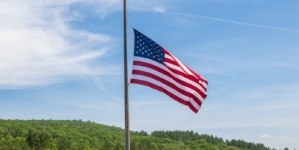-
Chatbots Can Meaningfully Shift Political Opinions, Studies Find - 11 mins ago
-
Democrat Says ICE Pepper-Sprayed Her, DHS Responds ‘Not True’ - 31 mins ago
-
FEMA rejects meeting with Newsom during low-profile push for L.A. fire funding - 46 mins ago
-
Ex-D.E.A. Agent Charged With Agreeing to Launder Millions for Cartel - 55 mins ago
-
Why Flags Are Half-Staff Today, This Weekend in the US - about 1 hour ago
-
Woman convicted of killing retired nurse to get cash for child’s cheerleading camp - about 1 hour ago
-
Olivia Nuzzi and Vanity Fair Will Part Ways - 2 hours ago
-
John Roberts Halts Court Ruling in Immigration Judges’ Speech Limits Case - 2 hours ago
-
MLB Insider Urges Cody Bellinger Rebuff Yankees for Eyebrow-Raising NL Cellar-Dweller - 2 hours ago
-
Judge Approves Release of Epstein Grand Jury Documents in Florida Case - 2 hours ago
People Told to ‘Stay Away’ From Some Hawaii Beaches as Waves Hit 40 Feet
A high-surf warning issued in parts of Hawaii advises potential beachgoers to avoid the shore, as waves stretching up to 40 feet pound the Aloha State.
Why It Matters
Large breaking waves could cause damage in infrastructure near certain shores in Hawaii this week, with the high-surf warning remaining in effect until 6 p.m. Thursday. Swimmers and beachgoers also could be at risk of injury, as the surf hit 40 feet in some places.
What To Know
The National Weather Service (NWS) office in Honolulu first issued the high-surf warning on Friday, with the alert saying an “extra-large” swell was expected to peak on Wednesday, which would produce “dangerously large surf” on north- and west-facing shores.

ruthannburke/Getty
Affected beaches include north- and west-facing shores of Niihau, Kauai, Oahu
and Molokai, as well as north-facing coasts in Maui. The surf was highest, up to 40 feet, on north-facing shores, and waves up to 30 feet were expected for those facing west.
The swell is expected to gradually diminish on Thursday and Friday.
Average surf for this time of year is 12 to 16 feet. The dangerous waves are often caused by long-period large swells generated by a storm system near Alaska.
A small craft advisory is also in place, warning inexperienced mariners, especially those operating small vessels, against navigating the waters, as seas were expected to be hazardous.
What People Are Saying
NWS meteorologist Genki Kino told Newsweek: “We have just been really active in the north Pacific with a series of storms off to the northwest. We get into these active patterns with back-to-back swells. January is on average our biggest time of year [for waves] on the north shores.”
While discussing 40-foot waves, NWS meteorologist Tina Stall previously told Newsweek: “Those waves are nothing to mess around with. If they’re high enough, we can also get some overwash up the beaches and onto the roadways if they’re nearby.”
Stall previously told Newsweek: “[High surf] is pretty typical for this time of year. We are getting into the winter season, which is north shore season. So we get a lot of swells out of the northwest from storm systems up in the north Pacific.”
NWS Honolulu, in a high-surf warning: “Expect ocean water surging and sweeping across beaches, coastal benches, and lava flows creating the potential for impacts to coastal properties and infrastructure, including roadways. Powerful longshore and rip currents will be present at most beaches. Large breaking waves and strong currents may impact harbor entrances and channels causing challenging boat handling.”
The warning added: “Stay away from the shoreline along the affected coasts. Be prepared for road closures. Postpone entering or leaving channels affected by the high surf until the surf subsides.”
What Happens Next
The surf is expected to drop below warning levels by Friday.
Source link
















